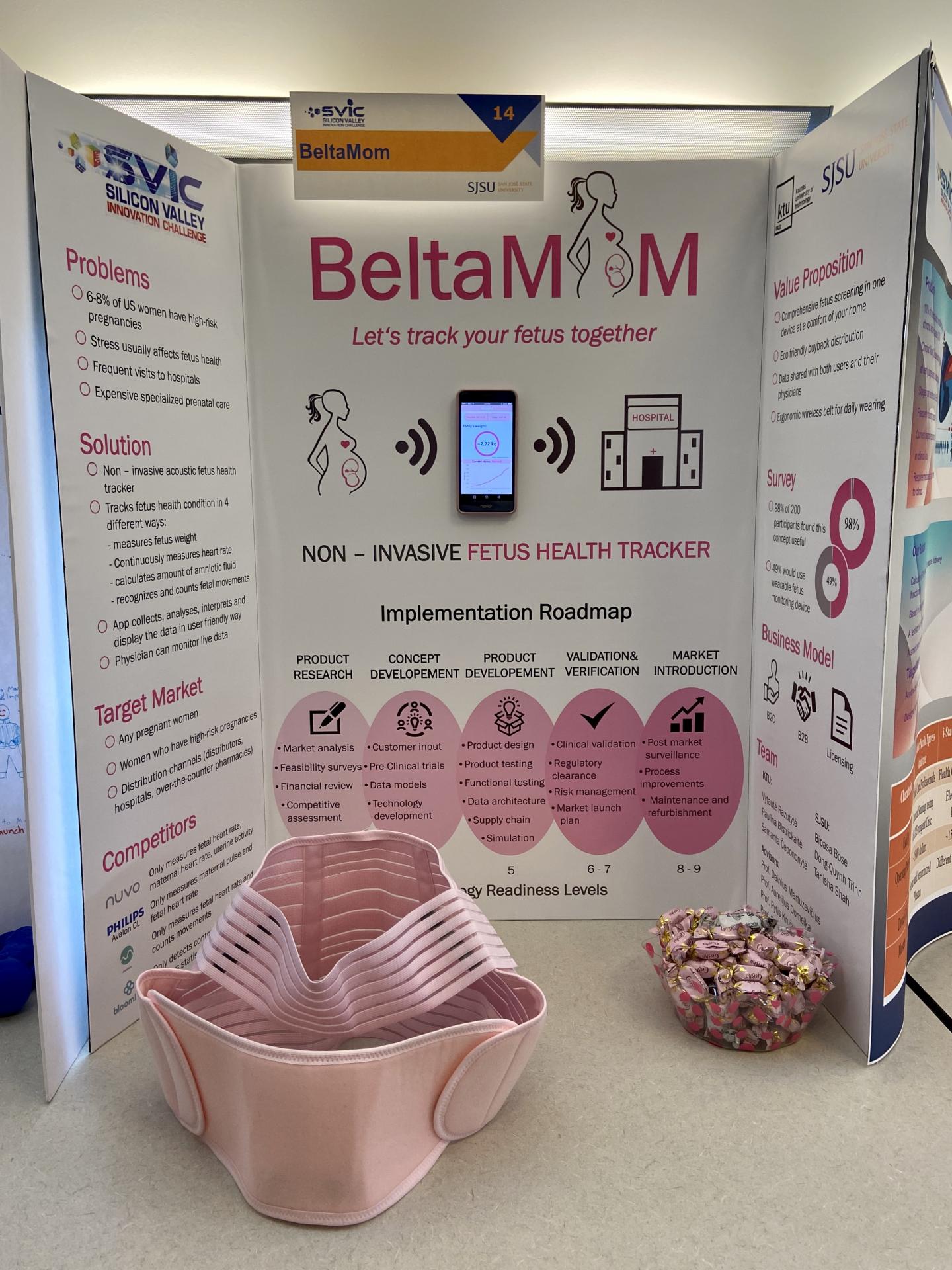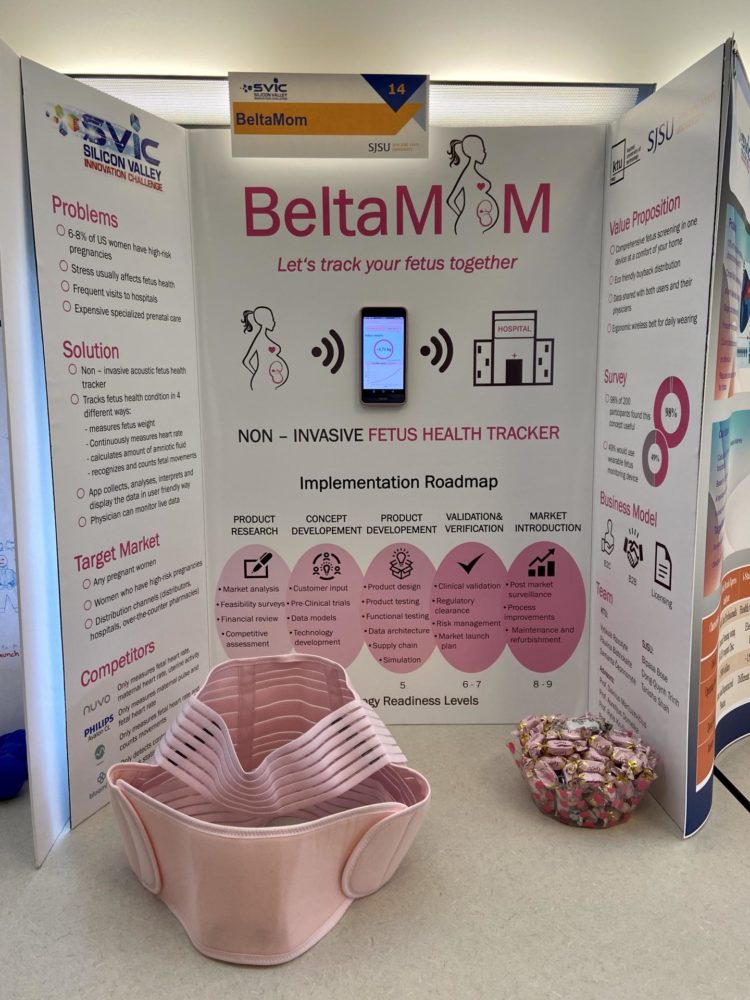The belt for pregnant women, which is monitoring the health of a fetus was labelled as the best in the healthcare field at the annual Silicon Valley Innovation Challenge organized by San Jose State University, US

Credit: KTU
A team of students from Kaunas University of Technology (KTU) BeltaMom has designed a belt for pregnant women that monitors the condition of the fetus from the 2nd trimester. It helps to keep track of the baby’s heart rate, his or her movements, weight and water volume. The innovation was labelled as the best in the healthcare field at the annual Silicon Valley Innovation Challenge organized by San Jose State University, US.
The belt has four ultrasonic sensors (to count fetal weight and water volume) and one stethoscope sensor (to count motion and heart rate). All the information collected is transmitted via Bluetooth to a mobile application that performs data analysis, tracks dynamics and reports changes.
“The idea came from the personal experience of our family members and the desire to make pregnancy easier and calmer. This topic is also relevant to us as future moms”, says Paulina Bistrickaite, one of the BeltaMom team members.
BeltaMom is a joint team of students from Kaunas University of Technology (KTU) and biomedical engineering students of San Jose State University. KTU students are representing the School of Economics and Business, Faculties of Mechanical Engineering and Design, and Civil Engineering and Architecture: Paulius Sudintas, Simonas Burneika, Mantas Murauskas, Arnas Pranckevicius, Vytaute Razutyte, Samanta Cepononyte, Paulina Bistrickaite.
Healthcare innovations are needed by society
Rita Juceviciene, associate professor at the KTU School of Economics and Business (SEB) says that the innovation was born out of a desire to improve the environment.
“Seeing the hardships our dear people are facing, we wanted to come up with a solution to alleviate these negative experiences. The competitions like this demonstrate, that one doesn’t need to be a medical professional in order to generate ideas and solutions to improve human health. In our case, the students of business, finance and engineering developed the concept for monitoring the health of a pregnant woman”, says Juceviciene.
According to her, the KTU students of Technology Entrepreneurship study module are successfully representing the university at the “Silicon Valley Innovation Challenge” for several years in a row. This tendency is especially visible in the healthcare innovations field.
“It is obvious that healthcare innovations are relevant and welcome to the public”, Juceviciene.
40 teams from all over the world participated in the competition, and most of them introduced medical devices.
Acquired knowledge from the medical field
According to the students, although there was a lot of work to be done on this project, the result is very encouraging.
“When we heard that there was an opportunity to go to America, to take part in an innovation competition, we started thinking seriously about the idea and its development to achieve that goal. We have been working hard since September, so we are very pleased with our achievements and feel well appreciated. This is proof that when you want something very hard and you work hard – everything is possible”, says Bistrickaite.
According to the students, preparing the project for the competition required a lot of effort to develop the technical part of the belt, and to encounter a little-known medical field. However, the latter aspect was also one of the most interesting parts of the project.
“In my opinion, the biggest challenge, but also the most exciting part of our whole job, was the medical field because we had little knowledge about pregnancy, the importance of the health of the fetus, and how medical devices work. Because of this, I have had a lot of interest, consultations with doctors and specialists of other fields, and I am very happy to have acquired new knowledge from them,” says Samanta Cepanonyte, another member of the team.
KTU teams among the best for several years
Since 2013, “Silicon Valley Innovation Challenge” has been successful for the KTU students attending the Technology Entrepreneurship study module. BeltaMom is already the 5th KTU student team among the winners with their idea and performance.
According to Juceviciene, this only shows that KTU students can successfully compete in the global arena.
“Technology Entrepreneurship, which has been taught at KTU for the 7th year, brings together a team of renowned scientists from various departments of the University who provide the students with not only updated, up-to-date study content but also help developing skills that are particularly needed in business,” says Juceviciene.
###
Media Contact
Aldona Tuur
[email protected]
370-612-55857
Original Source
https:/





